Hologic Bleach Enhancer Operating instructions
- Type
- Operating instructions
Hologic Bleach Enhancer
Hologic Bleach Enhancer is a laboratory cleaning solution designed to be used with sodium hypochlorite solutions for routine cleaning of laboratory surfaces and Hologic equipment including instrumentation intended for performing Hologic assays (DTS Systems, Tigris DTS System, and the Panther System) as well as Hologic general purpose instruments not intended for performing Hologic assays (Panther Trax and Tomcat Instrument).
The Bleach Enhancer for Cleaning is to be used in conjunction with sodium hypochlorite solutions for routine cleaning of laboratory surfaces and Hologic equipment.
Hologic Bleach Enhancer
Hologic Bleach Enhancer is a laboratory cleaning solution designed to be used with sodium hypochlorite solutions for routine cleaning of laboratory surfaces and Hologic equipment including instrumentation intended for performing Hologic assays (DTS Systems, Tigris DTS System, and the Panther System) as well as Hologic general purpose instruments not intended for performing Hologic assays (Panther Trax and Tomcat Instrument).
The Bleach Enhancer for Cleaning is to be used in conjunction with sodium hypochlorite solutions for routine cleaning of laboratory surfaces and Hologic equipment.









-
 1
1
-
 2
2
-
 3
3
-
 4
4
-
 5
5
-
 6
6
-
 7
7
-
 8
8
-
 9
9
Hologic Bleach Enhancer Operating instructions
- Type
- Operating instructions
Hologic Bleach Enhancer
Hologic Bleach Enhancer is a laboratory cleaning solution designed to be used with sodium hypochlorite solutions for routine cleaning of laboratory surfaces and Hologic equipment including instrumentation intended for performing Hologic assays (DTS Systems, Tigris DTS System, and the Panther System) as well as Hologic general purpose instruments not intended for performing Hologic assays (Panther Trax and Tomcat Instrument).
The Bleach Enhancer for Cleaning is to be used in conjunction with sodium hypochlorite solutions for routine cleaning of laboratory surfaces and Hologic equipment.
Ask a question and I''ll find the answer in the document
Finding information in a document is now easier with AI
Related papers
-
 Hologic Detection Reagent Kit Operating instructions
Hologic Detection Reagent Kit Operating instructions
-
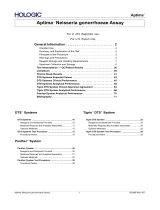 Hologic Aptima GC Assay, Panther; Aptima GC Assay, Tigris; Aptima GC Assay, DTS Operating instructions
Hologic Aptima GC Assay, Panther; Aptima GC Assay, Tigris; Aptima GC Assay, DTS Operating instructions
-
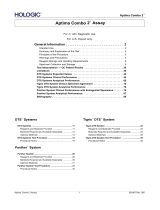 Hologic Aptima Combo 2 Assay, Panther 100; Aptima Combo 2 Assay, Panther 250; Aptima Combo 2 Assay, Tigris; Aptima Combo 2 Assay, DTS Operating instructions
Hologic Aptima Combo 2 Assay, Panther 100; Aptima Combo 2 Assay, Panther 250; Aptima Combo 2 Assay, Tigris; Aptima Combo 2 Assay, DTS Operating instructions
-
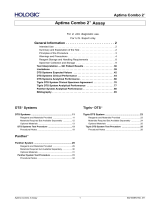 Hologic Aptima Combo 2 Assay, Panther 100;Aptima Combo 2 Assay, Panther 250 Operating instructions
Hologic Aptima Combo 2 Assay, Panther 100;Aptima Combo 2 Assay, Panther 250 Operating instructions
-
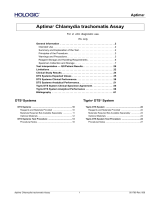 Hologic Aptima CT Assay, Tigris; Aptma CT Assay, DTS Operating instructions
Hologic Aptima CT Assay, Tigris; Aptma CT Assay, DTS Operating instructions
-
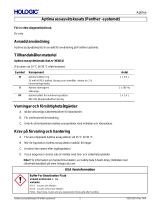 Hologic Aptima Auto Detect Operating instructions
Hologic Aptima Auto Detect Operating instructions
-
 Hologic Aptima Controls Kit Operating instructions
Hologic Aptima Controls Kit Operating instructions
-
 Hologic Aptima System Fluid Preservative Kit Operating instructions
Hologic Aptima System Fluid Preservative Kit Operating instructions
-
 Hologic Aptima System Fluid Preservative Kit Operating instructions
Hologic Aptima System Fluid Preservative Kit Operating instructions
-
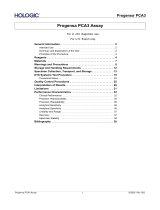 Hologic Progensa PCA3 Assay Operating instructions
Hologic Progensa PCA3 Assay Operating instructions
Other documents
-
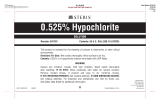 Steris 0.525% Hypochlorite Solution Operating instructions
Steris 0.525% Hypochlorite Solution Operating instructions
-
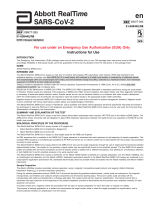 Abbot t RealTime SARS-CoV-2 Test Operating instructions
Abbot t RealTime SARS-CoV-2 Test Operating instructions
-
Siemens ADVIA 1800 User manual
-
Thermo Scientific ND-1000 User manual
-
Hitachi OPTIGEN AP3600 User manual
-
Siemens ADVIA 2400 User manual
-
Abbott ARCHITECT RHS Training manual
-
 Thermo Fisher Scientific UB NA Subject: Chemical Storage Conditions Owner's manual
Thermo Fisher Scientific UB NA Subject: Chemical Storage Conditions Owner's manual
-
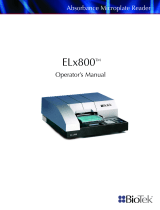 Biotek EL800NB User manual
Biotek EL800NB User manual
-
Roche cobas s 201 system User manual






















